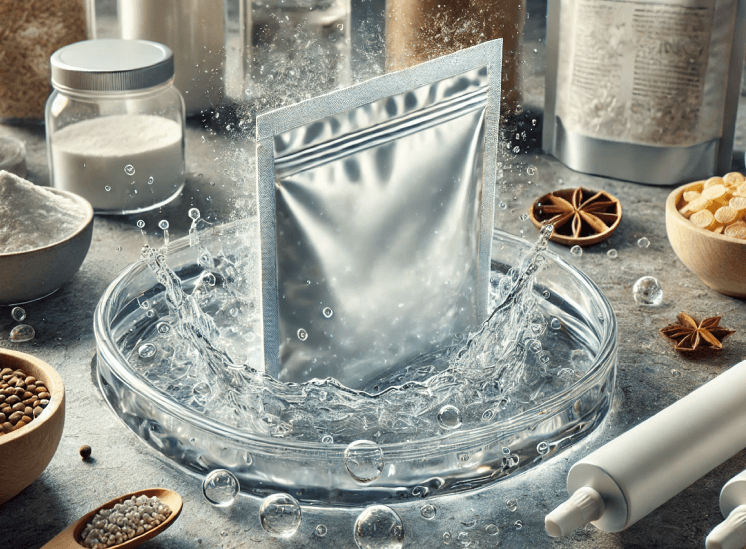The food industry is experiencing a significant shift towards more sustainable practices, with packaging being a major focus. Water-soluble packaging is one such innovation that has gained traction due to its environmentally friendly properties. This sustainable packaging solution, made from materials that dissolve in water, presents a promising alternative to traditional plastics. In this comprehensive guide, we will explore the applications, benefits, challenges, and future of water-soluble packaging in the food industry.
What is Water-Soluble Packaging?
Water-soluble packaging is made from materials that dissolve when exposed to water, leaving behind no toxic residue. The most common material used for this type of packaging is polyvinyl alcohol (PVA), a synthetic polymer that is water-soluble and biodegradable under certain conditions. This type of packaging can be used for a wide variety of products, including food, and offers an effective way to reduce plastic waste.
Key Characteristics of Water-Soluble Packaging:
- Dissolvability: Water-soluble packaging dissolves when it comes into contact with water, making it ideal for single-use packaging.
- Biodegradability: The materials used are often biodegradable, reducing environmental impact.
- Safe for Use: Water-soluble films are safe for packaging foods, pharmaceuticals, and other consumer goods.
Benefits of Water-Soluble Packaging in the Food Industry
1. Reduction of Plastic Waste
One of the primary advantages of water-soluble packaging is its potential to reduce plastic waste. Traditional plastic packaging remains in the environment for hundreds of years, contributing to pollution and harming ecosystems. In contrast, water-soluble packaging dissolves and biodegrades much faster, offering a more sustainable alternative.
2. Convenience for Consumers
Water-soluble packaging offers convenience, particularly for single-use items. For example, food products wrapped in water-soluble films can be prepared without needing to remove the packaging, which will dissolve during cooking or consumption. This not only reduces waste but also improves user experience.
3. Lower Environmental Impact
By dissolving in water, this packaging reduces the risk of contributing to marine plastic pollution. Additionally, the production process for water-soluble packaging typically requires fewer resources and emits less carbon than conventional plastic manufacturing.
4. Sustainability Goals
As more companies in the food industry set ambitious sustainability targets, water-soluble packaging can help them meet these goals. By replacing conventional plastic with biodegradable, water-soluble alternatives, companies can demonstrate their commitment to environmental stewardship.
Challenges of Water-Soluble Packaging in the Food Industry
1. Moisture Sensitivity
One of the biggest challenges of water-soluble packaging is its sensitivity to moisture. Since it dissolves in water, it may not be suitable for packaging products that are exposed to high humidity or wet environments. Special considerations must be made when using this type of packaging for products that need to be stored or transported in damp conditions.
2. Cost
Water-soluble packaging is generally more expensive to produce than traditional plastic packaging. The costs associated with PVA production and the specialized equipment needed to manufacture water-soluble films can make it less accessible for smaller food companies. However, as the demand for sustainable packaging grows, these costs are likely to decrease.
3. Limited Applications
While water-soluble packaging is highly effective for certain applications, such as pre-portioned food items or single-use containers, it may not be suitable for all types of food packaging. Products that require long-term durability or that are exposed to high moisture levels may not benefit from this solution.
Applications of Water-Soluble Packaging in the Food Industry
1. Pre-Portioned Food Products
Water-soluble packaging is ideal for pre-portioned food items, such as powdered ingredients, instant coffee, or tea. Consumers can simply drop the entire package into water or food, where it will dissolve and integrate seamlessly.
2. Single-Use Food Containers
For ready-to-eat meals, water-soluble containers offer a biodegradable alternative to plastic trays or containers. These containers can dissolve in hot water or compost naturally after use, making them a convenient and eco-friendly option.
3. Food Supplements
Water-soluble films are also used in the packaging of food supplements, vitamins, and nutraceuticals. These films dissolve quickly in water, making them convenient for consumers while reducing packaging waste.
4. Instant Food and Beverage Mixes
Products like instant soup, sauce mixes, or flavored beverages benefit from water-soluble packaging, as the packaging dissolves along with the product when hot water is added. This eliminates the need for additional waste disposal.
The Future of Water-Soluble Packaging in the Food Industry
Water-soluble packaging is poised to become a key component in the food industry's efforts to reduce plastic waste and improve sustainability. As technology advances and production costs decrease, this packaging solution will become more accessible and versatile. Continued research into new materials and improved water solubility will expand the range of applications, making water-soluble packaging a mainstream option for food companies seeking eco-friendly solutions.
Conclusion
Water-soluble packaging offers a promising solution to some of the most pressing challenges facing the food packaging industry today. With its ability to reduce plastic waste, biodegrade naturally, and improve convenience, it is an innovation worth exploring. While challenges remain, including cost and moisture sensitivity, the potential benefits make water-soluble packaging a key player in the future of sustainable packaging.
Looking for innovative solutions to meet your sustainability goals?
Discover our Sustainability Intelligence Software to monitor food sustainability risks, streamline compliance, and stay ahead of global standards!





.webp?width=1644&height=1254&name=Food%20Safety%20Dashboard%201%20(1).webp)
